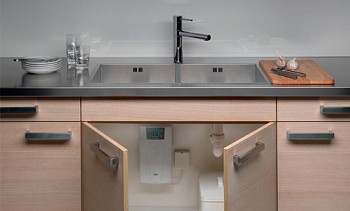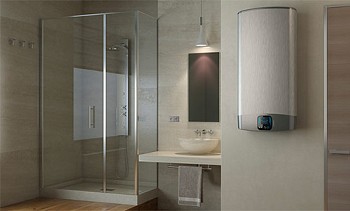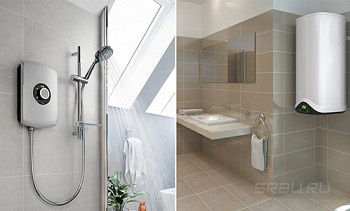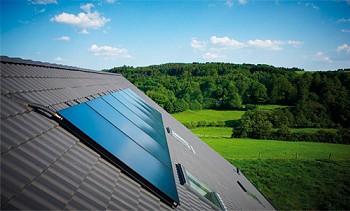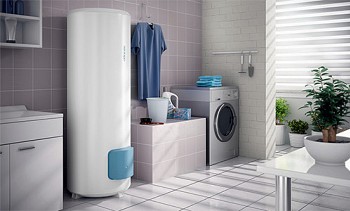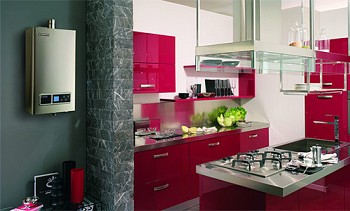How to choose the right geyser considering all the parameters
Despite the widespread modernization of housing and communal services, the quality of the services they provide leaves much to be desired. This is especially true for hot water. To solve this problem once and for all it is necessary to buy a gas water heater. How to choose a gas column that meets all the requirements will be discussed in this article.
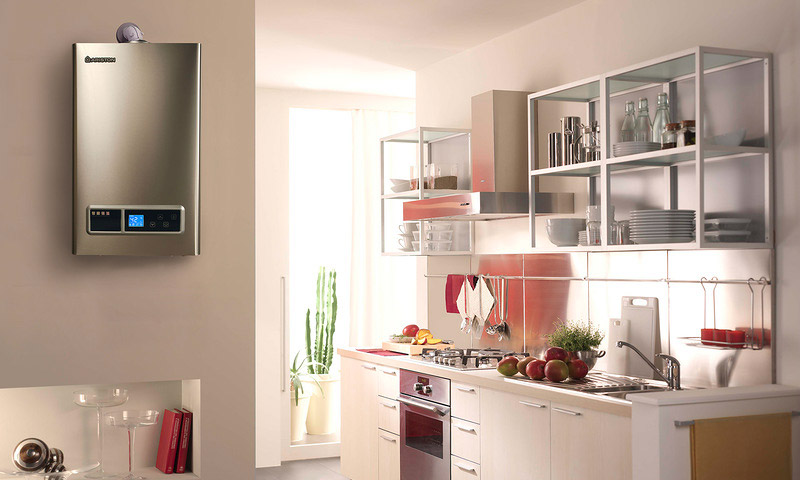
Content:
- Varieties of geysers and their device
- Geyser Performance
- Water pressure for which the column is designed
- Types of ignition - which are and which are better
- Power modulation - why is it needed and why is it important
- Types of heat exchangers
- Combustion products
- Security devices - what they are and the importance of their availability
- Manufacturers worth paying attention to
- Selection Criteria - Summarize
Varieties of geysers and their device
Modern manufacturers provide the widest selection of devices with various technical and operational characteristics. All gas water heaters can be divided into two types:
- flowing;
- cumulative.
Flowing gas column (circuit diagram).
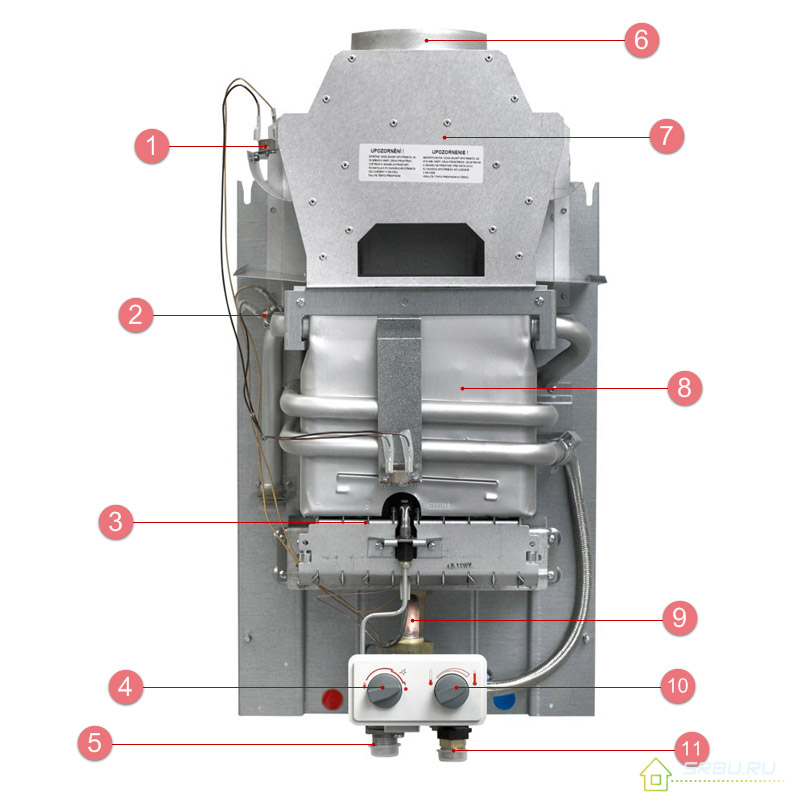
1. Traction detector;
2. Overheat detector;
3. Gas burner;
4. Gas flow regulator;
5. The outlet pipe of hot water;
6. Exit for a chimney;
7. A collector for products of combustion;
8. Heat exchanger;
9. Gas pipe;
10. The regulator of water intake;
11. Outlet pipe for cold water.
The flowing gas column has compact dimensions due to the small gas burner and the lack of a hot water tank. It can be installed in a small room with good natural ventilation. However, such devices have low productivity, to connect several hot water intake points to the hot water system, you need to purchase a high-power device. Such speakers are best suited for urban apartments.
Accumulative gas water heaters (circuit diagram)
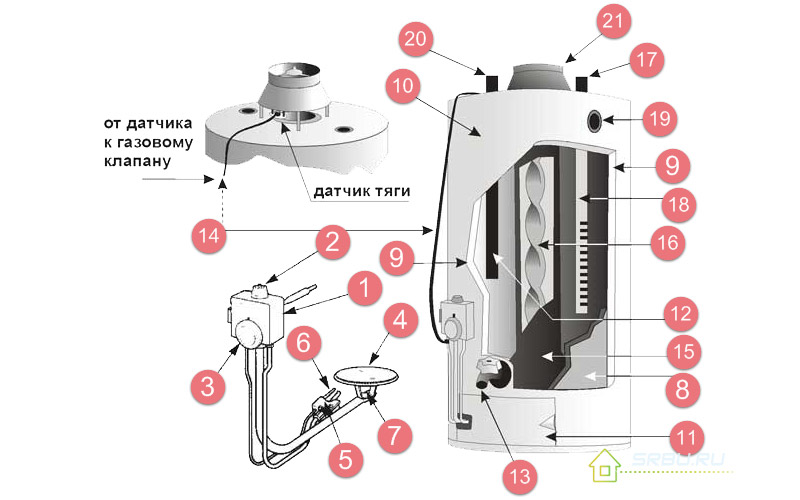
1. Gas check valve;
2. Knob for adjusting the gas supply;
3. Adjustment of water temperature;
4. Gas burner;
5. Ignition gas wick;
6. Thermocouple;
7. The nozzle of the main gas burner;
8. Internal protective coating;
9. Thermal insulation of the water tank;
10. External protective cover;
11. Damper;
12. Anode to prevent scale and corrosion;
13. Drain cock;
14. Cable from the traction detector;
15. The base of the chimney;
16. Divider;
17. Branch pipe of supply of cold water;
18. Swirl water flows to intensify mixing;
19. Socket for emergency relief valve;
20. Pipe leaving for hot water;
21. Traction stabilizer.
Storage devices are significant. The volume of the tank ranges from 50-500 liters. To use hot water, it is not necessary to turn on the device each time. Effective thermal insulation of the tank allows you to save heat for a long period. The heat exchangers of the devices are more efficient. Of the main disadvantages, it should be noted the significant dimensions that force the device to be installed in special boiler rooms, basements or in attics. In addition, the significant weight of large-volume water tanks requires additional reinforcement of the ceilings and preparation of the concrete base. Such gas water heaters are advisable to use in cottages and private homes, where there are many points of use.
Geyser Performance
Such a parameter as the performance of geysers can be indicated both in kW and in l./min. You can find out this indicator by looking at a special plate that is located on the body of the column itself or by looking into the device’s passport. Most often, performance is indicated in l / min.You can determine the required column power by the number of water intake points, i.e., by the number of mixers.
It is believed that one mixer is capable of passing 6 - 7 liters / minute. Suppose that the column is selected for the apartment in which two faucets are installed, in the bathroom and kitchen. In order to comfortably use hot water in both rooms at the same time, a column with a capacity of 13 liters / minute is needed. Using the table below, you can choose the power you need for a flowing gas column.
| Number of water intake points | Speaker power | ||
|---|---|---|---|
| 10 l | 13 l | 15 l | |
| Kitchen and washbasin | ¤ | ||
| Kitchen and shower | ¤ | ||
| Kitchen, bath and shower | ¤ | ||
| Kitchen, 2 baths and shower | ¤ | ||
Water pressure for which the column is designed
As for the water pressure, here it is necessary to pay attention to 2 indicators, this is the minimum pressure at which the column is turned on and the maximum pressure that the heat exchanger can withstand. The minimum pressure is very important for gas flow water heaters, since it depends on it whether the gas column can even turn on. This is especially important for old buildings, where the infrastructure is very worn out and the pressure in the water supply is too low. It is best if this indicator is not higher than 0.15 bar.
The maximum pressure that the column can withstand is important for the reason that water shock systems are characteristic of water supply systems. In this case, a short-term increase in water pressure in the water supply occurs, which can lead to rupture of the heat carrier of the gas heater. It is important that the maximum pressure is between 11 and 12 bar.
Types of ignition - which are and which are better
1. Budget and technically less advanced devices have a manual type of ignition. It is done at the touch of a button and bringing the match to the oiler, very uncomfortable and unsafe, especially if the gas column is in a hard-to-reach place. Moreover, after the start the wick continues to burn, which is not very economical.
2. Piezo ignition is an option of an electromechanical match integrated into the system; it does not bring any serious advantages compared to manual ignition. Mechanical control with a minimum of electronic components. Activation occurs at the touch of a button.
3. More modern models are equipped with an electric ignition system. Therefore, if you are thinking about how to choose a gas water heater, you need to decide on the ignition system. It can be divided into volatile - connection using an adapter to a household electrical network and non-volatile. In the case of a volatile system, when the power is cut off, the speaker will simply stop working.
Non-volatile systems can be divided into:
Hydro generator (HydroPower) - electronic control. An integrated device generating electricity from the flow of water is integrated into the column. Activated by opening the hot water tap;
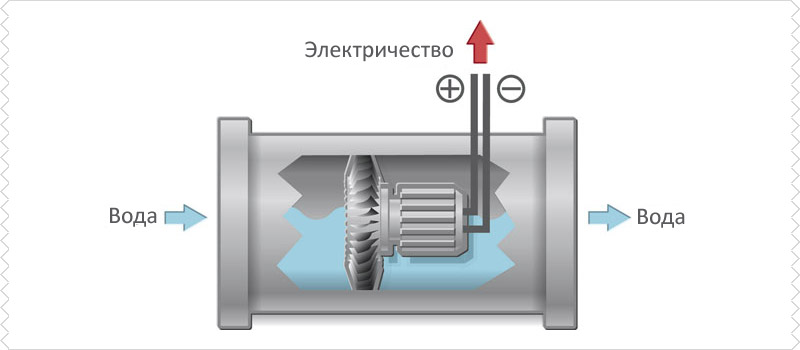
Schematic diagram of a gas column hydrogenerator.
Battery electric ignition - non-volatile system with electronic control. It is installed both as a backup and as the main ignition system. A special LCD monitor shows the battery level.
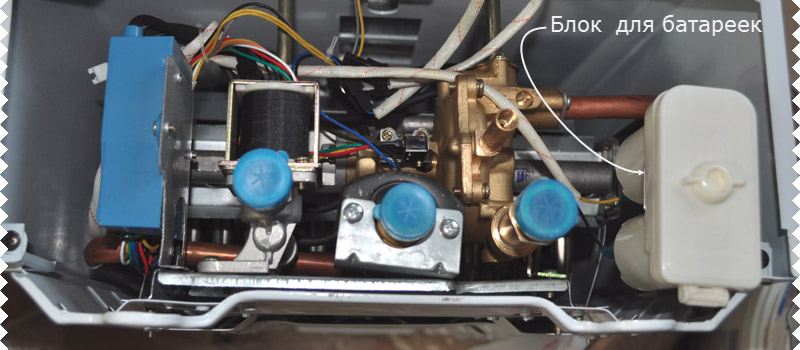
Battery-powered gas water heater.
Of all the above, the most effective is a non-volatile hydrogenerator, however, such systems are quite expensive and difficult to repair, require the installation of additional mud filters on the water supply pipe. At the moment, the most common option is to connect the speaker to the mains.
IMPORTANT! If the place of residence there is a frequent blackout, then you can buy coronary heart disease - an uninterruptible power supply. Do not neglect stabilizing devices, especially with frequent power surges.
Power modulation - why is it needed and why is it important
This device controls the intensity of the flame in the heat exchanger, depending on the pressure of cold water entering the column.A very convenient device allows you to safely use water of a given temperature, regardless of whether neighbors turn on the water, because of which the pressure drops or not.
This not only reduces gas consumption and significantly increases the comfort of using hot water without looking at other points of water intake in the apartment, but can also protect against heat burns.
Types of heat exchangers
The classification of heat exchangers is most easily carried out according to the material from which the ions are made:
Steel - has a low cost and corrosion resistance. Products with steel heat exchangers have significant weight, but also greater reliability.
Highly refined copper - the mechanical characteristics are similar to steel, but the heat transfer is much higher, due to this the efficiency of the device will improve significantly.
Plain copper - due to the presence of impurities, the heat exchanger warms up unevenly and the tank bursts. To prevent this from happening too quickly, many budget manufacturers treat the surface of the nozzles and heat exchanger with specially heat-resistant paint, but there is no tangible benefit from such a “lining” over several years of operation.
Combustion products
There are two types of geysers, depending on how carbon monoxide is removed.
First type - classic, with a chimney. In most apartments that are being converted to use gas heating appliances, it is not acceptable, since there simply is no technical possibility of installing a chimney and putting it on the roof.
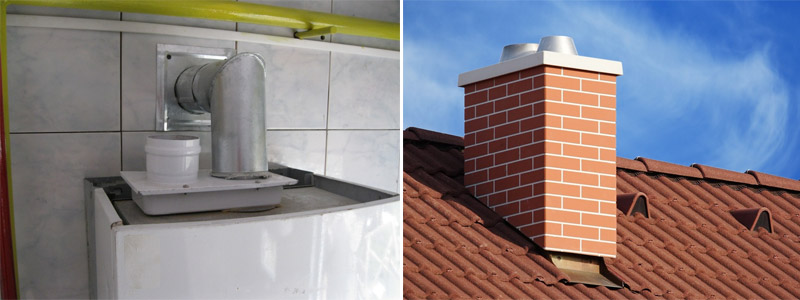
Second type - chimneyless (parapet). The hole for the removal of combustion products is made in the wall of the building. This type of equipment costs a little more and is volatile, since the removal takes place by force with the help of a fan installed in the column case. The room in which the smokeless gas column is installed must have good natural or forced ventilation. Withdrawal is carried out in a forced manner with the help of a turbine or fan built into the outlet pipe.
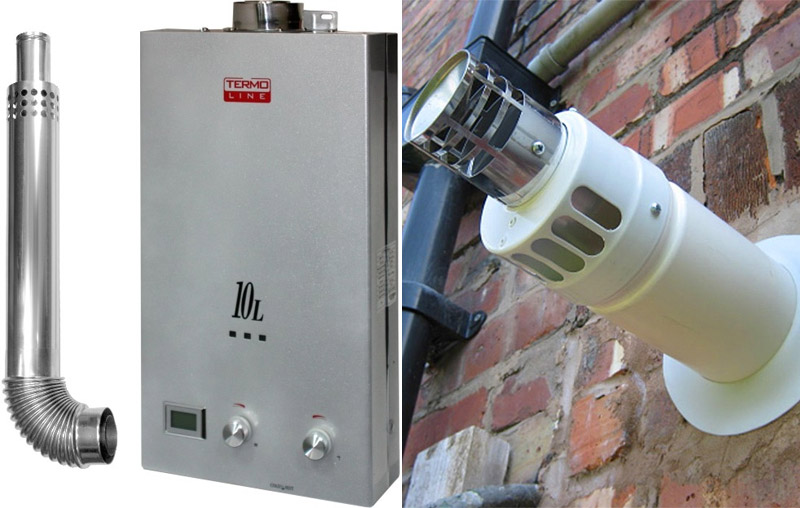
Particular attention should be paid to rooms with installed plastic windows. Lack of air access can affect the operation of the device. Provided that there are appropriate detectors, the column simply will not turn on. If they are not, the result may be the most deplorable. A ventilation valve that can be cut into the plastic part of the window with your own hands will help to solve the problem. valve designs are quite complex with multi-stage filters and the simplest and cheapest.
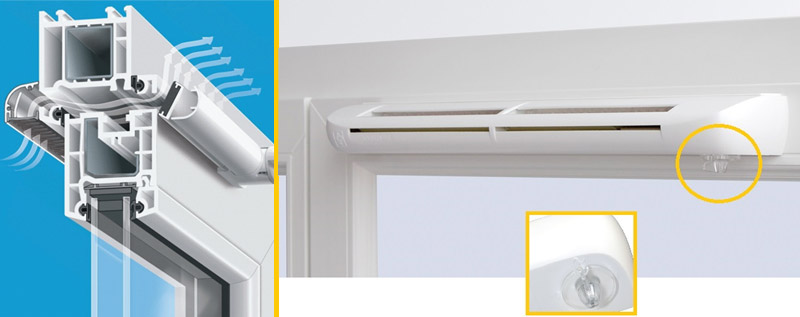
Security devices - what they are and the importance of their availability
If the geyser is installed in the apartment, and not in a special room (boiler room, boiler room), then the presence of all these devices is required:
- Ionization detector. Turns off the device in case of extinction of the flame. It is possible to use a special combustion sensor. There are models where both systems are installed;
- Emergency pressure relief valve. Discharges excess if the pressure in the pipes is exceeded. It is especially important for storage columns;
- Flow detector. Automatically turns on the column when opening the tap at any point in the water intake of the domestic hot water system
- Traction detector. It blocks the operation of the water heater if the draft in the smoke channel is insufficient. Prevents filling the room with carbon monoxide.
- Low water pressure detector. The geyser will not turn on if the water pressure in the system is insufficient. Prevents burnout of the heat exchanger.
- Water overheating sensor. Turns off the device when the temperature reaches a threshold value.
Manufacturers worth paying attention to
The last thing you need to decide before choosing a gas water heater, flow or storage type - this is the manufacturer. It is necessary to pay attention to products of recognized brands. Their devices are not only reliable and durable, but also have a wide range of additional features.
Beretta

Beretta is an Italian manufacturer that has proven itself exclusively on the good side. A distinctive feature of the products is the wide changes in the parameters of functional capabilities in one model line, which gives a significant difference in the cost range. Also, gas water heaters of this company are distinguished by their exquisite appearance, which allows you to do without the use of false false panels when decorating interiors.
Ariston

Ariston is another Italian manufacturer. Product quality is combined with a fairly affordable cost. The functionality of the devices without fail includes the electronic or mechanical function of maintaining a given water temperature. Units and assemblies subjected to the main operational load are made of composite materials that are resistant to corrosion and guarantee a long service life.
Vaillant

Vaillant is a German manufacturer in the quality of the equipment of which there is no doubt. Its devices are characterized by high performance and unpretentiousness, both to the level of water pressure and to the quality of the gas, the latter is especially relevant for domestic gas systems.
Bosch GmbH Thermotechnology

Bosch GmbH Thermotechnology - concern includes several brands Buderus, Junkers and Thermotechnology. The Bosch geyser is an exceptionally high-quality and reliable product. Gas fittings of products have the ability to control the required power, the outlet water has a given temperature and pressure, regardless of the dynamics of changes in these parameters in the water supply system.
Electrolux

Electrolux is a Swedish manufacturer. His products, despite the highest quality, are positioned in the middle price category. Electrolux gas water heater is characterized by the use of quality materials. Copper heat exchangers undergo a special treatment that creates an additional protective layer on the surface of the material eliminating the manifestation of corrosion processes.
Selection Criteria - Summarize
Before choosing a gas column for an apartment or a house, you need to make a list of basic parameters and technical indicators that the device must meet:
- The diameter of the gas pipe and the gas pressure in the eyeliner;
- The intensity of the use of hot water, the number and location of water intake points;
- External dimensions and type of installation (floor-mounted);
- Minimum working pressure of hot water at the inlet to the device;
- Gas burner power in kW and heat exchanger performance in l / min;
- Device price;
- Appearance.
In one-room apartments with families of up to three people, a geyser with a capacity of 15-17 kW and a productivity of 10-11 l / min will be quite sufficient. In two and three bedroom apartments with more than 3 residents, the minimum required power of 23-24 kW guarantees a productivity of 13-14 l / min. If several points of water intake are provided in the DHW system, and the use of hot water has significant intensity, it is necessary to install gas water heaters with a capacity of at least 25-30 kW with a capacity of 15-17 l / min.
In the private sector, where significant fluctuations in the pressure of cold water are possible with a drop to 1 atmosphere, it is advisable to purchase storage devices that operate at a minimum pressure of 0.1 atm, then the user will have a supply of water in case of unexpected outages.

